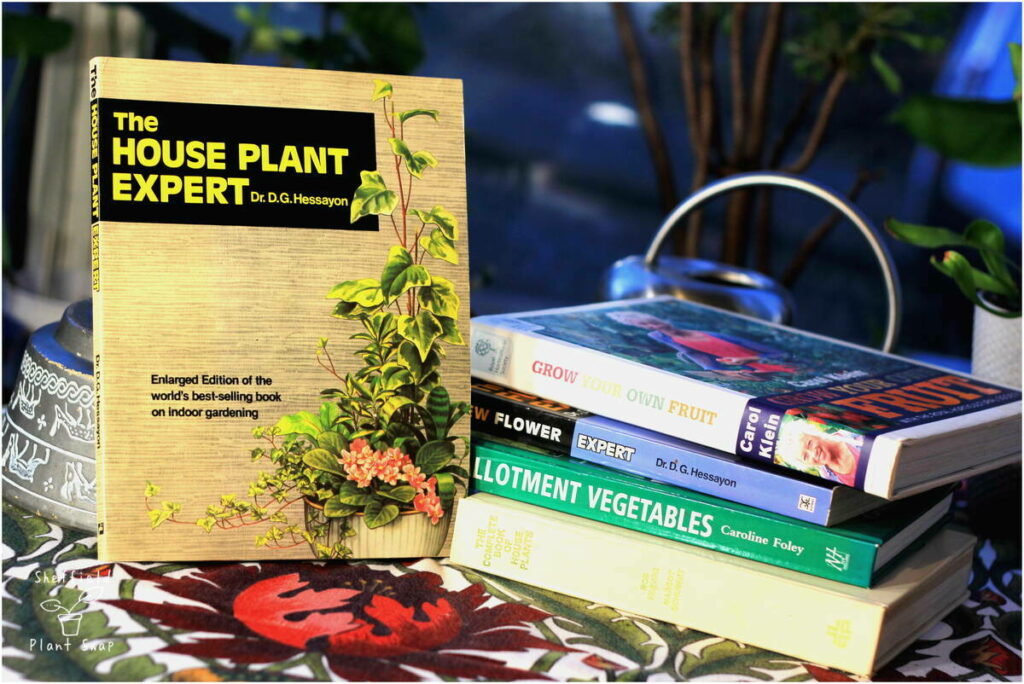
Although I’ll admit that I’m the first to grab my phone to Google something I want to know about one of my newly acquired houseplants; such as ‘How do I look after my birds nest fern?’ or ‘what is wrong with my tradescantia?”. I do also love an informative book to browse through or look things up. So I thought I’d recommend some of our favourites here at PlantSwap.
My mum was a very gifted plantswoman and garden designer (totally amateur), but she never really liked house plants, and so although I inherited a number of gardening books from her, none have been that useful to my new found house plant obsession. But there are loads of books available; which ones should you make room for?
A must for your bookshelf
This post will be the first of a number of booky related posts, starting with two related titles that Fay and I have always agreed should be on any house plant lovers shelf; although slightly dated, Dr D G Hessayon’s two houseplant books are a must.
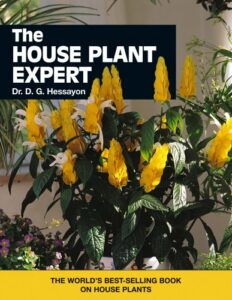
The House Plant Expert
by Dr D G Hessayon (edition reviewed – 2003 edition)
The cover of this book proudly proclaims it to be ‘the world’s best-selling book on house plants’, and we’d agree it’s very useful. Firstly the book has informative sections giving tips and hints about choosing, buying and taking home your new house plant; and then housing (which receptacle to use) and repotting (how to move a plant).
There is a whole section is on displaying your plants; specimen plants, pot groups, indoor gardens and terrariums. This also includes a useful room-by-room guide to house plants – although the room photographs are very retro – I do love a bit of historic interior design!
There are chapters on plant care, plant troubles and a plant growers dictionary. A short chapter about the classification of house plants (foliage, flowering, pot plants and cacti) includes a flow chart which can help identify some plants (although see below for more on this subject).
However the majority (and most useful part) of the book is the house plant A to Z. This is where to go to find out how to care for your new friend.
Most are listed by their scientific names, but some similar species are grouped together; ferns, succulents or bromeliads – although once you know the name of the plant you have using the index is easiest.
There is an illustration of each plant, a general description, ‘secrets of success’ as well as common issues or problems. This is where you’ll find details on how much light the plant needs, watering tips, if the plant needs misting, repotting information and how to propagate should you want to make ‘babies’ to bring to PlantSwap.
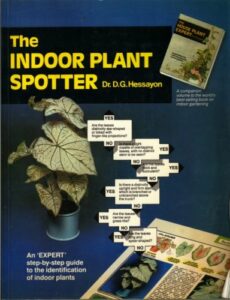
The Indoor Plant Spotter
by Dr D G Hessoyon (edition reviewed 1st Ed, 1985)
The second book we recommend is also by Dr Hessayon and is a ‘companion volume’ to the House Plant Expert Book. To be honest it’s very useful in it’s own right as it’s great for identifying that ‘mystery plant’ you’ve brought home from PlantSwap.
Firstly, there is a fantastic identification flow chart; starting with ‘does the plant bear distinct spines or bristles on its stem?’, and leading to pages of plants with different coloured flowers, different shaped foliage and other distinctive attributes.
If you need more help identifying your plant, then check out Fay’s helpful blog post all about identifying mystery plants! When you’ve identified the plant you’ve got then it’s time to turn to the ‘House Plant Expert’ book for detailed instructions.
Where to get the books
You can often find earlier editions of both in your local charity shop for a few pounds; and if you’d like to have a look we always bring a copy of each to the PlantSwap events – just ask one of us for a look. Alternatively you can pick up secondhand copies of House Plant Expert here and Indoor Plant Spotter here, or if you are lucky borrow them from your local library.
Of course as these books are now rather old (especially the editions you’ll find in charity shops), and their main drawback is the lack of modern (fashionable) plants. Although it does include some Pilea varieties, it leaves out the wildly popular ‘Pilea Peperomioides’ along with my current favourite; ‘Oxalis triangularis’. But if you’ve picked up a bromeliad, begonia, some kind of cactus, a dracaena, a fig or snake plant, and what to know how to care for it, these are definitely the books for you.
Oh, and if you find these useful there are lots of other titles by Hessayon to explore; Vegetable and Herb Expert, Greenhouse Expert, Tree & Shrub Expert or Fruit Expert – so if you’re also an outdoors gardener there’s likely to be a Hessayon book for you!
In another post I’ll tell you about some of the more recent books we’ve added to our bookshelves. We’d love to have your book recommendations – let us know what planty books you love – we’re always interested to hear what other people find useful.
This post contains affiliate links. For more information see here!

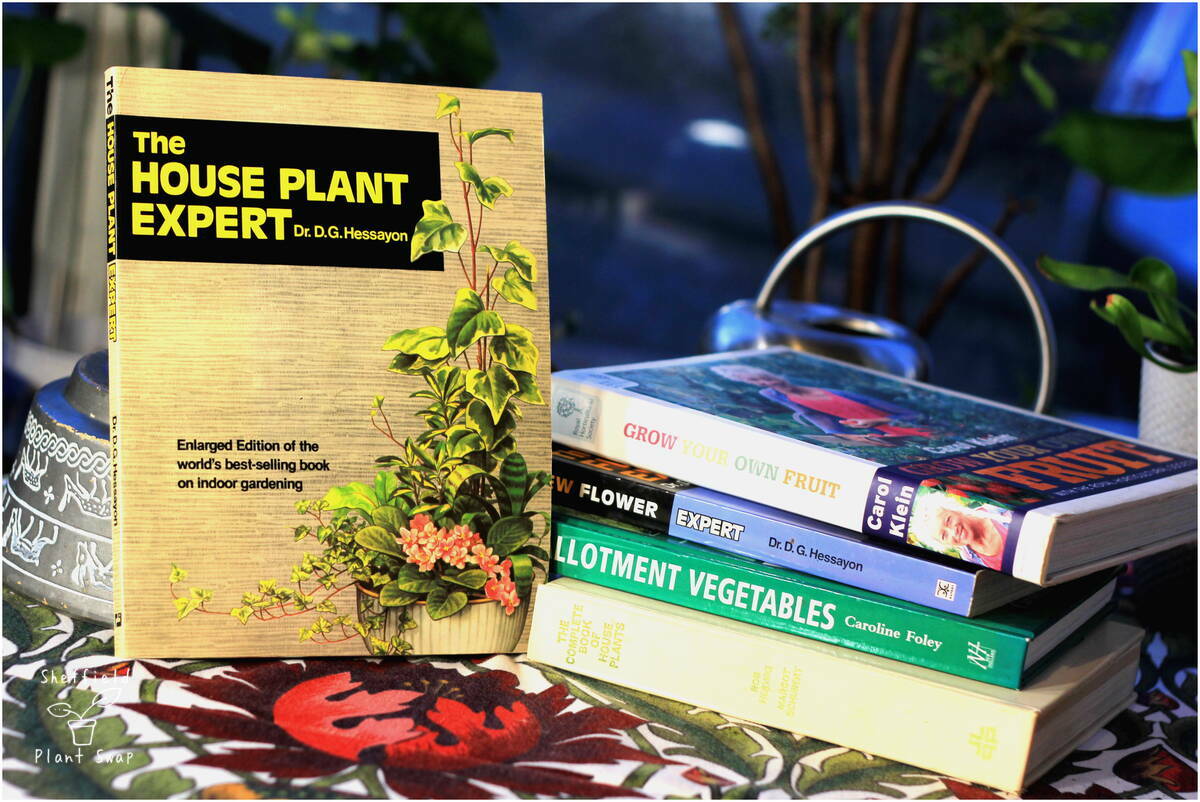
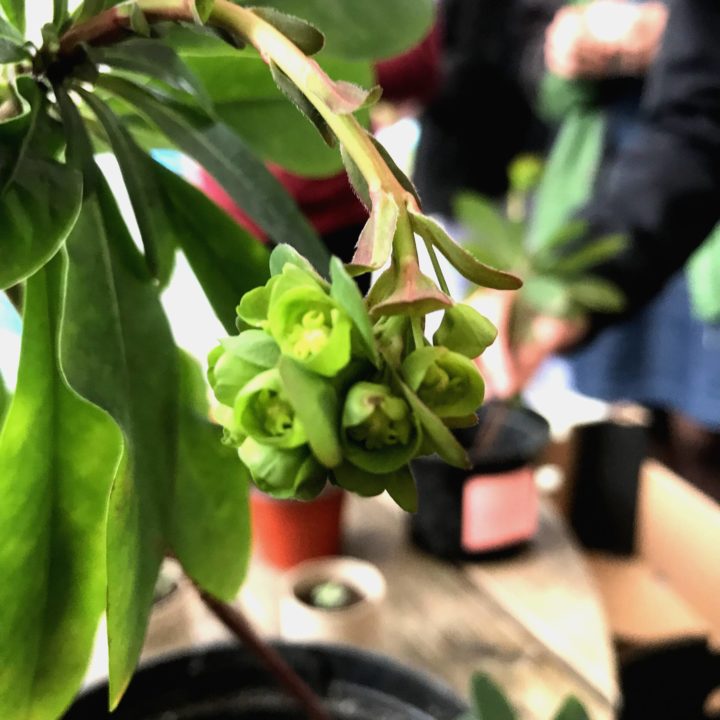


1 comment on “The world’s bestselling book on house plants”
Comments are closed.